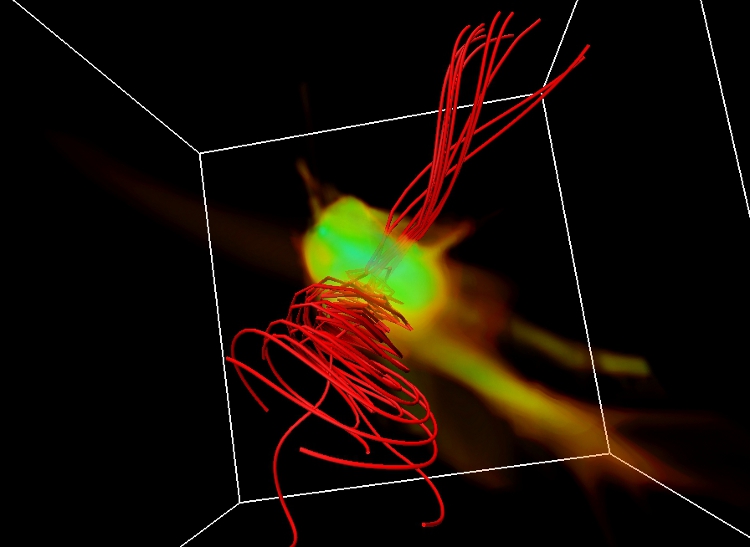| EPoS Contribution |
|
Magnetic Field Effects in Protoplanetary Disks from a Global Perspective
Michael Kueffmeier NBI/StarPlan, Copenhagen, DK | |
|
In the context of adaptive mesh refinement (RAMSES) simulations of the collapse from cores - simulated as part of giant molecular clouds - to disks, I investigate in particular the role of the magnetic field. The initial level of magnetic flux, at the point in time when the core starts to collapse, is shown to have important consequences for the size, mass, and structure of the disks.
The magnetic field goes through a characteristic sequence of structure evolution during the accretion process, starting out with an approximate hour glass shape in the earliest phases of evolution, then evolving into a structure that contains a central jet and a broader disk outflow. Late in the accretion process the magnetic field is mainly oriented along the direction of rotation. However, non-stationarity, with strong fluctuations in time and space, remain a characteristic property through the entire process. Jets and outflows, for example, are seldom symmetric - more often one side or the other dominates, only to be replaced by the opposite sense of symmetry breaking. I also investigate the magnitude and structure of magnetic dissipation in the envelope and disk, and its possible relation with the occurrence of magnetic null points. I also discuss why a modified definition of the classical mass-to-flux ratio is needed when there is a central object that has a significant mass relative to the mass remaining in the envelope. We are in the process of analysing the evolution of several protostars within their first 100 kyr and we expect to have a reasonable sample of objects for even longer time periods by the time of the conference. Already now, our results give constraints on disk formation, and show that an adequately high number of cells per level of refinement is crucial to be able to model the accretion process properly. Insufficient refinement leads to disks which are lower in mass and more homogeneous, hence smearing out the influence of turbulence. | |
 | |
| Caption: Protostar and its protostellar disk 80 kyr after Star Formation. The field lines represent the strong magnetic fields going through the disk plane in an hour glass form and also colliminating a weak bipolar outflow. | |
| Collaborators: Aake Nordlund, NBI/StarPlan, DK |
Key publication
Suggested Sessions: Magnetic Fields |

